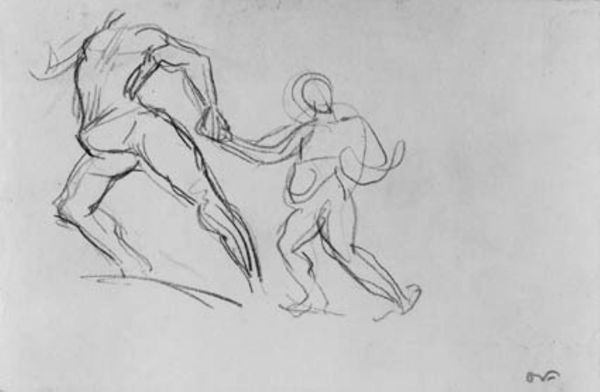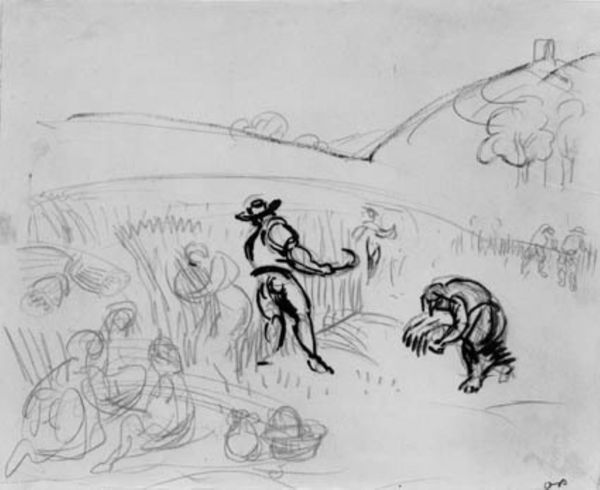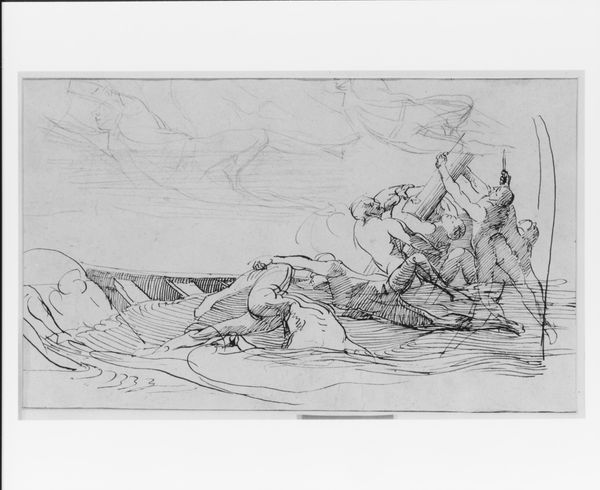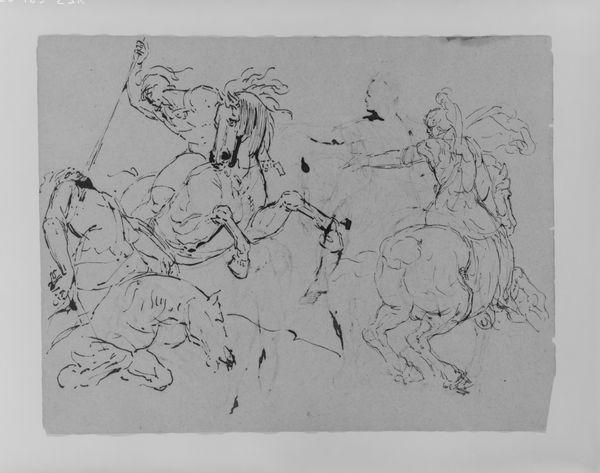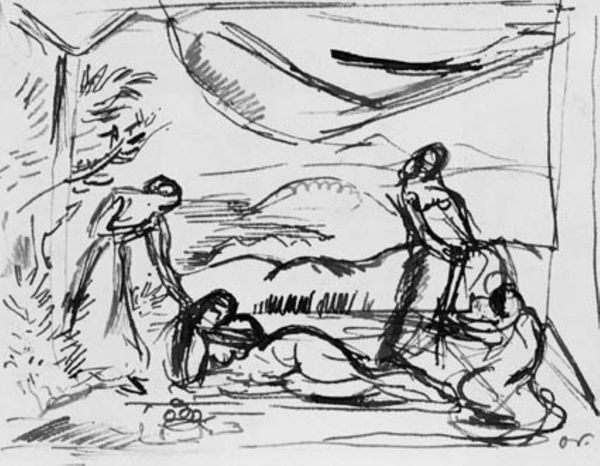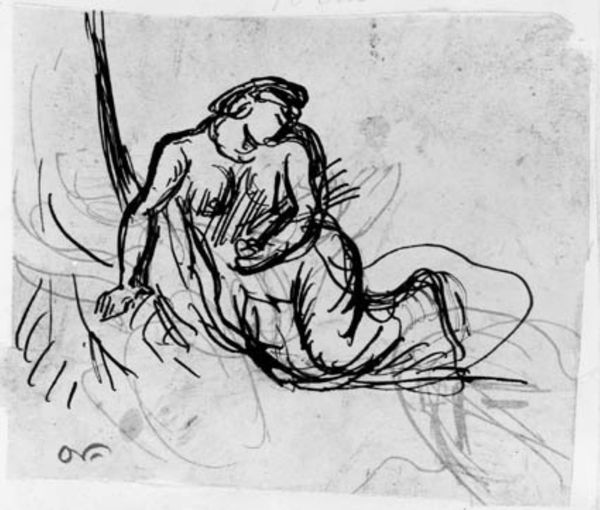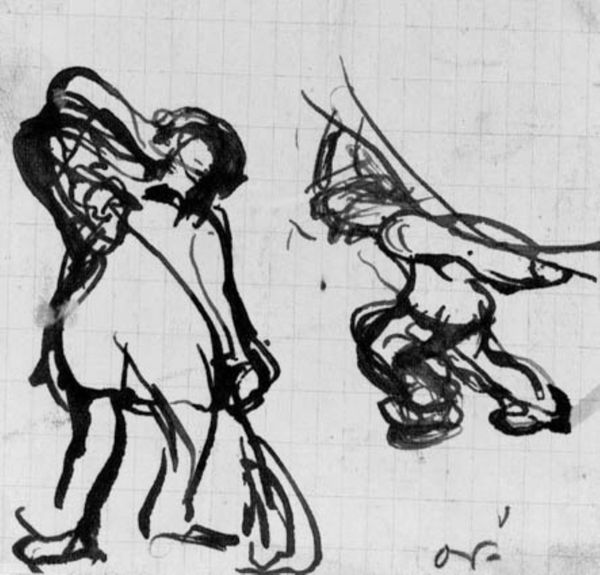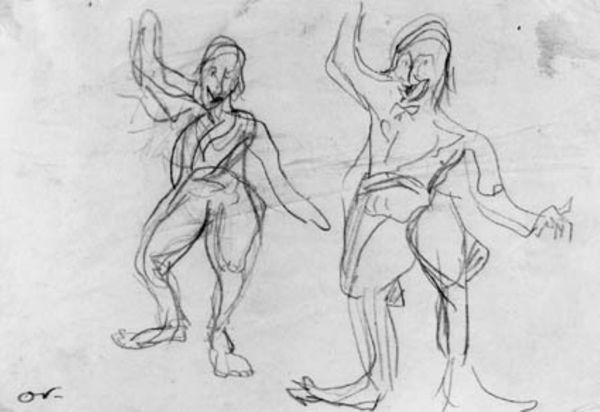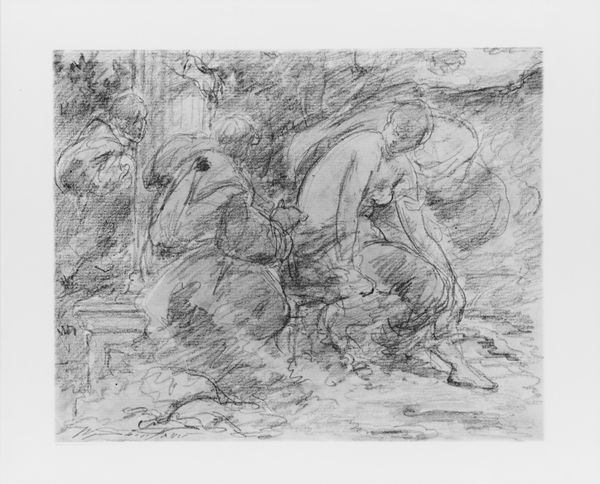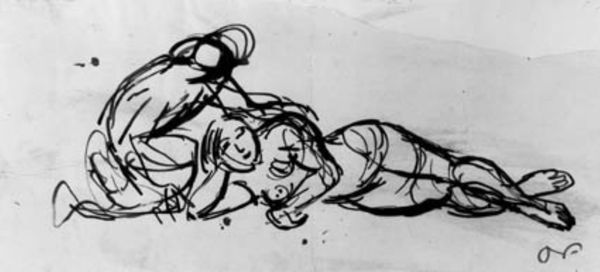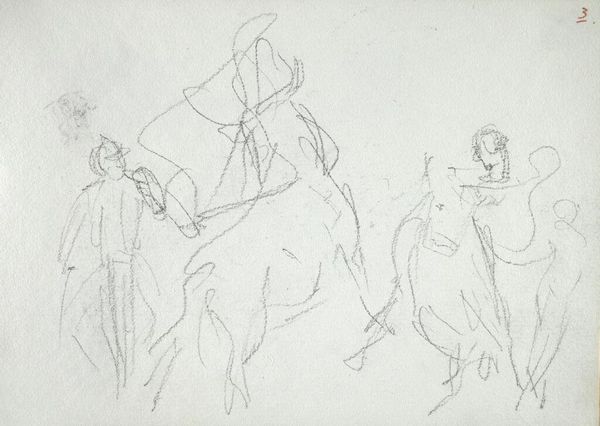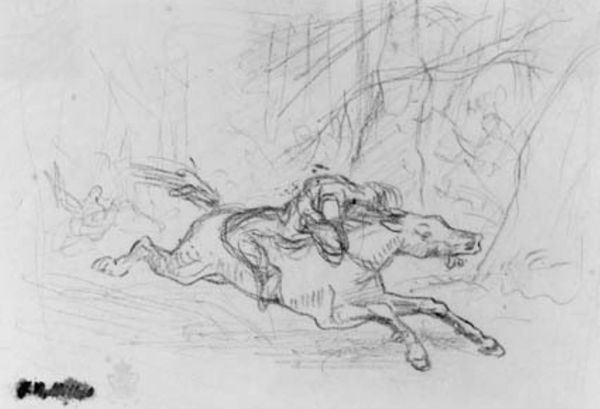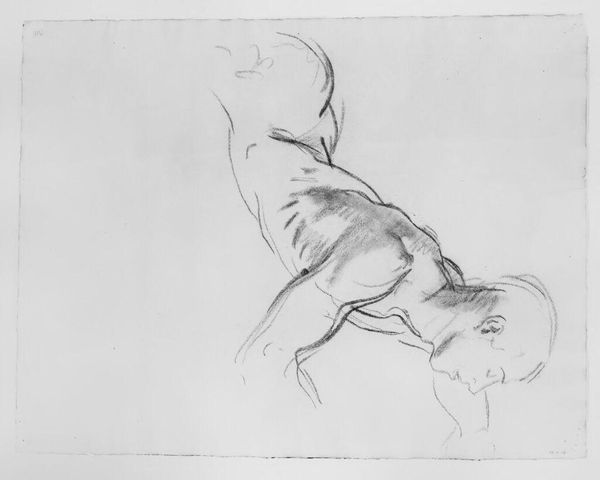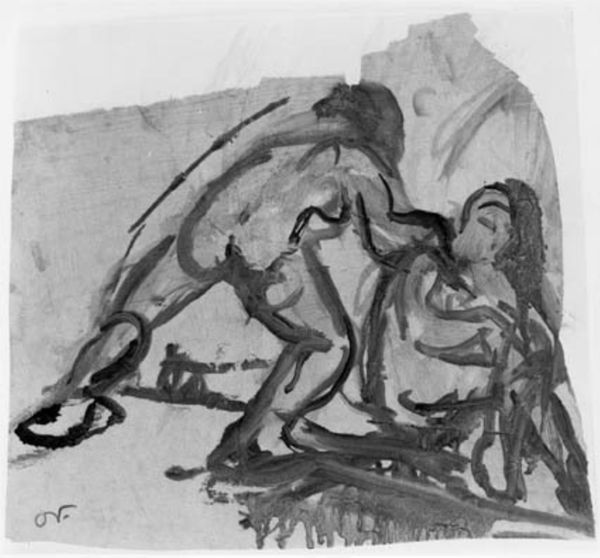
drawing
#
drawing
#
landscape
#
figuration
#
expressionism
Dimensions: 239 mm (height) x 176 mm (width) (bladmaal)
Curator: This expressive drawing, "To mandlige figurer i en båd, den ene roende," or "Two Male Figures in a Boat, One Rowing," created by Othon Friesz around 1910, pulls you in immediately with its dynamic energy. Editor: It certainly does. My initial reaction is a feeling of immediacy. There's a raw vulnerability to the figures, heightened by the stark contrast and unfinished lines. I find myself wondering, who are these figures? And what context or narratives surrounding masculinity might Friesz be exploring through their interactions? Curator: The social context in that period was a crucible of changing societal norms, particularly with respect to gender. Friesz, using a simple drawing medium, highlights the human form. The lines almost feel etched into the page, economical, yet loaded with the sheer physical exertion involved in rowing. The raw graphite—its production and very application—becomes part of the narrative about work and being. Editor: Precisely. How does their labor impact their sense of self, and how does the historical depiction of masculine labor inform the aesthetic choices here? We are so often removed from labor's realities, but this almost romanticized sketch keeps that tension in view, too. It really speaks to ideas of the male nude and labor as it has been represented, controlled, and consumed. Curator: I find it intriguing how Friesz avoids meticulous detail. There are merely gestural representations, emphasizing the form and actions rather than likeness. What can be constructed materially for such few and rapidly created details? The figures and the boat itself, created out of pure materiality become symbols themselves. Editor: The fluidity could represent a breaking from older established art norms as well. It seems, through that lens, that the physical act of rowing embodies themes of liberation, freedom, and change as figures depart or travel between destinations both literal and figurative. What do you make of that idea? Curator: It's a lovely interpretation, but remember also the paper, graphite and charcoal have their own social history, too, from production, to point of sale, and distribution and each is shaped by and also helps to reinforce structures of power in turn. Editor: Good point. I guess this is the constant dialectic: where the artwork meets its raw material makeup and construction. In the end, Friesz seems to be urging us to ponder the relationship between individuals, labor, and that social moment's expressionistic tendencies. Curator: Agreed. The very constraints Friesz worked under in terms of materials is part of his message and it is an experience not often repeated again quite in this same manner and context.
Comments
No comments
Be the first to comment and join the conversation on the ultimate creative platform.
